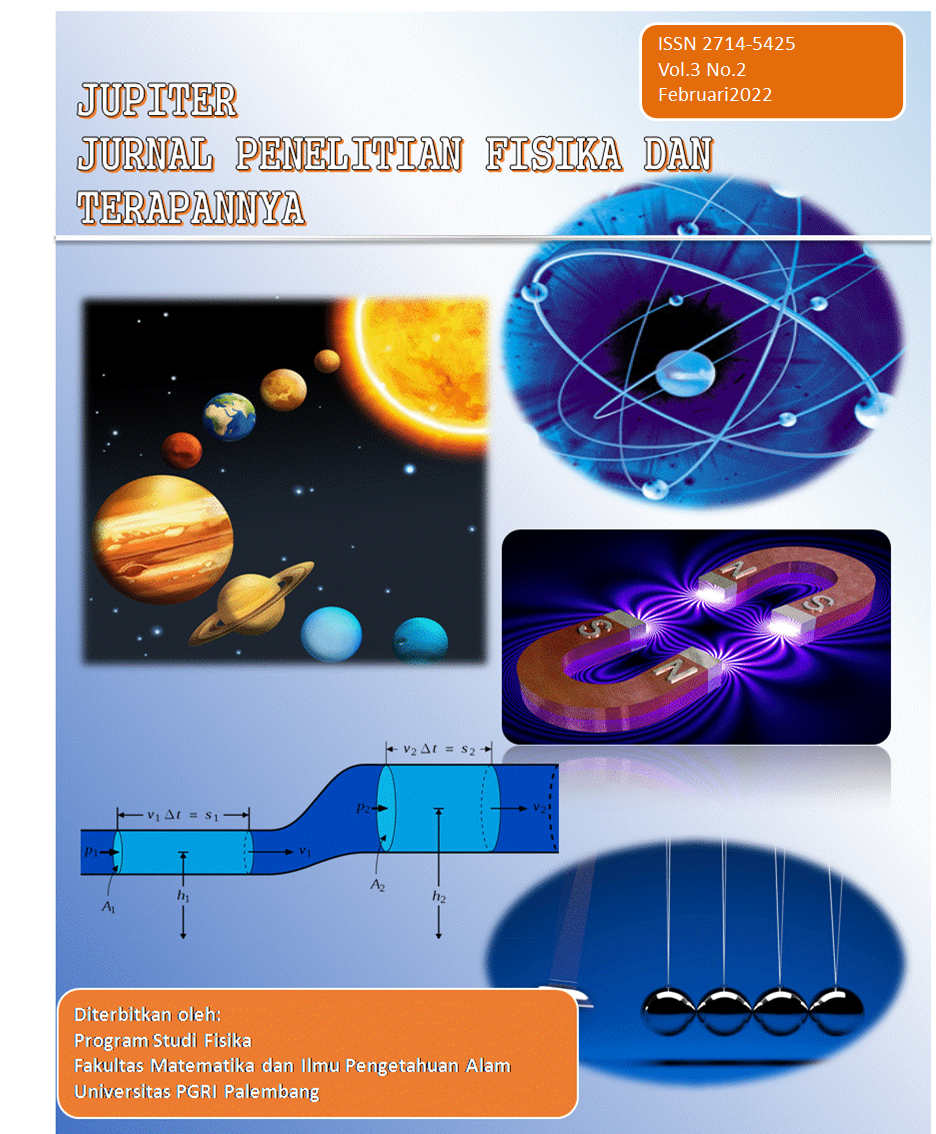Effect of Exposure to Magnetic Field ELF (Extremely Low Frequency) 500μT on pH and Physical Quality of Green Cayenne Pepper
DOI:
https://doi.org/10.31851/jupiter.v3i2.7224Keywords:
Keywords, green cayenne pepper, Extremely Low Frequency magnetic field, pHAbstract
Cayenne pepper (Capsicum frutescens L) is a horticultural crop commodity that has high economic value with fruit consisting of various combinations of colors and flavors. Extremely Low Frequency (ELF) magnetic fields are non-ionizing electromagnetic waves and have been widely used in various food fields. This study aims to examine the effect of exposure to the ELF magnetic field intensity 500 μT  for 60, 90, and 120 minutes on the pH and physical quality of green chili peppers. The research design used was Completely Randomized Design (CRD). The samples used were green chilies with 4 samples of the control group (without exposure to the ELF magnetic field) and 12 samples of the experimental group (the group that was exposed to the ELF magnetic field intensity of 500μT). Measurements were made on days 2, 4, 6 and 8 after exposure. The results showed that the ELF magnetic field was able to inhibit the growth of lactic acid-forming spoilage microorganisms in chilies, thus affecting the pH and physical endurance indicators of green chili peppers. The effective dose in inhibiting the activity of lactic acid-forming bacteria in green cayenne pepper was exposure intensity of 500μT for 120 minutes.
Â
Â
References
Albert, B., A. Johnson, J. Lewis, M. Raff, K. Roberts, dan P. Walker. 2002. Biologi Molekuler Sel . Jakarta: PT Gramedia Pustaka.
Alonso and Finn, 1994, Dasar-Dasar Fisika Universitas Jilid 2 Medan Dan Gelombang Terjemahan Oleh Lea Prasetyo Dan Khusnul Hadi. Erlangga ,Jakarta
Ariyani, E., Sudarti, S., & Prastowo, S. H. B. (2019). Pengaruh Paparan Extremely Low Frequency Magnetic Field Terhadap pH Edamame. Jurnal Pembelajaran Fisika, 8(3), 132-136.
Aryasita PR, Mukarromah A. 2013. Analisis Fungsi Transfer pada Harga Cabai Merah yang Dipengaruhi oleh Curah Hujan di Surabaya. J. Sains dan Senipomits 2(2) : 249-254.
Cahyono B. 2003. Cabai Rawit. Kanisius. Yogyakarta
Kimestri, A. B. 2015. Pengawetan Bahan Pangan dengan Teknik Nontermal. Yogyakarta: Universitas Gadjah Mada.
Komar N, Rakhmadiono S, Kurnia L. 2001. Teknik Penyimpanan Bawang Merah Pasca Panen di Jawa Timur. J. Teknologi Pertanian 2 (2) : 79-95.
Lamona, A., & Purwanto, Y. A. (2015). Pengaruh jenis kemasan dan penyimpanan suhu rendah terhadap perubahan kualitas cabai merah keriting segar. Jurnal Keteknikan Pertanian, 3(2).
Mutia AK, Purwanto YA, Pujantoro L. 2014. Perubahan kualitas bawang merah (Allium ascalonicum L.) selama penyimpanan pada tingkat kadar air dan suhu yang berbeda. J. Pascapanen 11(2) 2014 : 108- 115.
Nurdjannah R, Purwanto YA, Sutrisno. 2014. Pengaruh jenis kemasan dan penyimpanan dingin terhadap mutu fisik cabai merah. J. Pascapanen 11 (1) : 19-29.
Rachmawati R, Defiani MR, Suriani NL. 2009. pengaruh suhu dan lama penyimpanan terhadap kandungan vitamin C pada cabai rawit putih (Capsicum frustescens). J. Biologi XIII (2): 36-40.
Santika A, 2007. Agribisnis Cabai. Penebar Swadaya, Jakarta.
Sujitno, E., & Dianawati, M. (2015). Produksi panen berbagai varietas unggul baru cabai rawit (Capsicum frutescens) di lahan kering Kabupaten Garut, Jawa Barat. Pros. Sem. Nas. Masy. Biodiv. Indon, 1(4), 874-877.
Sulistyaningrum A, Yanto T, Naufalin R. 2015. Perubahan kualitas nira kelapa akibat penambahan pengawet alami. J. Penelitian Pascapanen Pertanian 12(3) : 137-146.
Wulandari S, Bey Y, Tindaon KD. 2012. Pengaruh jenis bahan pengemas dan lama penyimpanan terhadap kadar vitamin C dan susut berat cabai rawit (Capsicum frutescens L.). J. Biogenesis 8(2): 23-30.
Downloads
Published
Issue
Section
License

 JUPITER: Jurnal Penelitian Fisika dan Terapannya by http://www.univpgri-palembang.ac.id/e_jurnal/index.php/Jupiter/ is licensed under a Creative Commons Attribution-ShareAlike 4.0 International License.


















